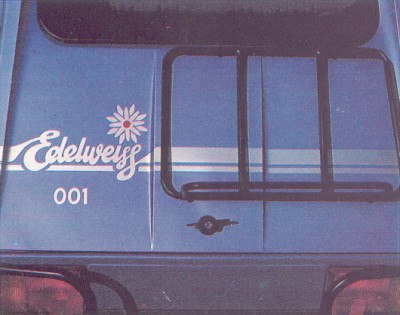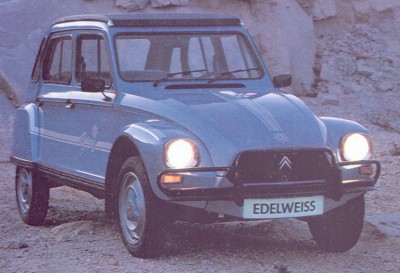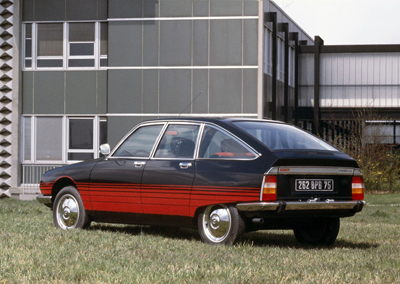[Retrospective] Citroën: the iconic special series - part 2
- Jérémy

- Apr 12
- 4 min read

Citroën has left its mark on the automotive industry, not only with its technological innovations and bold designs, but also with its consummate art of special editions. For this new article in this new section dedicated to special editions, I invite you, after discovering the first gems in a previous issue, to immerse yourself in this fascinating universe that has contributed so much to the brand's image. The iconic 2CV Dolly is the perfect symbol of this long creative lineage that has given birth to true rolling legends. Today, I'm going to focus on three icons from the 70s and 80s: the unforgettable 2CV Charleston, Dyane Edelweiss and GS Basalte. I'll also try to decipher why these limited editions are still a valuable strategic tool for a manufacturer. Let's embark on this new journey into the heart of Citroën's ingenuity.
The origins of the myth: Charleston, Edelweiss and Basalt
Let's go back to the 1970s and 1980s, a golden age for Citroën's imagination in terms of special editions. Three models perfectly illustrate this creative effervescence, each with its own unique character.
The Citroën 2CV Charleston is undoubtedly one of the most famous. Initially launched as a limited edition at the end of 1980, its success was such that it became a permanent feature of the range in July 1981 and remained so until the end of 2CV production in 1990. Its distinguishing feature? An elegant two-tone body, usually black and Delage Red, but also black and Helios Yellow or, later, two shades of grey (Cormoran Grey and Nocturne Grey). Inspired by the 1930s, with its round chrome headlamps (borrowed from the Dyane) and its special grey houndstooth upholstery, the Charleston offered a touch of retro chic and eccentricity that was immediately appealing. Based on the 2CV 6, it combined the old-fashioned charm of the Deuche with a more opulent presentation and became a real fashion phenomenon.
In a different vein, the Citroën Dyane Edelweiss (launched mainly in 1981 and 1982, depending on the market) was aimed at customers who loved nature and escapism. Based on the Dyane 6, it was distinguished by its specific colour, often Colorado Beige, with stickers depicting stylized mountains and the famous edelweiss flower on the rear wings and boot. Underbody and wheel arch protectors and full wheel covers (sometimes those of the GS X3) completed the 'soft adventurer' look. The interior also received special upholstery. Produced in limited numbers (estimated at around 7,500 units), the Edelweiss played on the image of outdoor recreation, a popular theme at the time.
Finally, let's go back in time to 1978 with the Citroën GS Basalte. Launched just before the facelift that would give birth to the GSA, this special edition focused on elegant and discreet sportiness. Exclusively available in AC200 Black, the GS Basalte was recognisable by the red and grey stripes running across its body. Based on the GS Club version, it shared the same 1220cc engine but added some attractive features: a sunroof, specific wheels (full hubcaps similar to the CX), headlight wipers and a particularly refined interior with red and black draped seats and headrests. Produced in a run of around 1,800 units, it was aimed at a younger, more dynamic clientele who appreciated an exclusive yet understated appearance. Its name, evocative of a dark, hard volcanic rock, reinforced this image of quiet strength. These three examples, among many others, demonstrate the diversity of Citroën's approaches: retro chic for the Charleston, nature escape for the Edelweiss and elegant sportiness for the Basalte.
The art of the special series: A multi-faceted strategy
But why do manufacturers, and Citroën in particular, make so much use of special editions? Far from being simple styling exercises, they fulfil very specific marketing and commercial objectives.
Firstly, a special edition is an excellent way of revitalising a range and maintaining interest in a model, sometimes in the middle or at the end of its career. By offering a new version, often with exclusive colours or features, the brand creates a buzz and restores visibility to the base model. It's a way of saying: "Look, this car still has something to offer!
Secondly, they allow the brand to test new trends, whether in colours, materials or features. A limited edition provides a lower-risk testing ground. If an element is a resounding success (such as the Charleston's two-tone paintwork), it can then be incorporated into the standard range.
Thirdly, special editions are often good value for customers. They usually combine a number of options and customisation features at an overall lower price than if these features were chosen separately for the standard model. This "customer advantage" increases the attractiveness of the offer and can trigger a purchase by hesitant consumers. It can also be a valuable way of selling off end-of-line stock.
Finally, a well-designed special edition can be used to target specific customer segments. The Edelweiss was aimed at nature lovers, the Charleston at chic nostalgics, the Basalte at dynamic young people... Each series tells a story and appeals to a specific audience, thus broadening the model's potential customer base. They contribute significantly to the brand's image and associate Citroën with creativity, daring and a certain closeness to the different expectations of its customers.
Not only did Citroën invent legendary cars, the chevron brand was also a pioneer and master of special editions. From the original 2CV Spot (1976) to the line inaugurated by successes such as the Dolly, including the iconic Charleston, Edelweiss, Basalte and so many others, Citroën knew how to use these limited editions to punctuate the life of its models, attract new customers and reinforce its image as a creative and people-oriented manufacturer. More than just commercial variants, many of these special editions have become sought-after collector's items, testimony to an era and a unique know-how. This is Citroën's strength: the ability to evoke emotion and make an impression, even through variations on familiar themes. A tradition of originality that will undoubtedly continue to inspire the brand for years to come.





















Comments